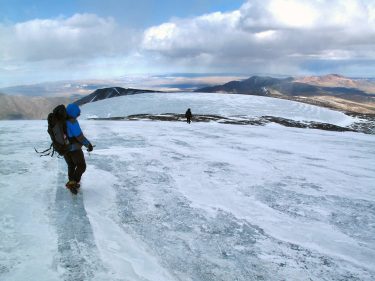
The simple story says that during the last ice age, temperatures were colder and ice sheets expanded around the planet. That may hold true for most of Europe and North America, but new research from scientists in the Department of Earth and Space Sciences at the UW tells a different story in the high-altitude, desert climates of Mongolia.
The recent paper in Quaternary Science Reviews is the first to date ancient glaciers in the high mountains of Mongolia’s Gobi Desert. It compares them with glacial records from nearby mountains to reveal how glaciers behave in extreme climates.
On some of the Gobi mountain ranges included in the study, glaciers started growing thousands of years after the last ice age ended. In contrast, in slightly wetter parts of Mongolia, the largest glaciers did date from the ice age but reached their maximum lengths tens of thousands of years earlier in the glacial period rather than at its culmination around 20,000 years ago, when glaciers around most of the planet peaked. Both trends differ from the typical chronology of glacier growth during an ice age.
Read more at UW Today »
